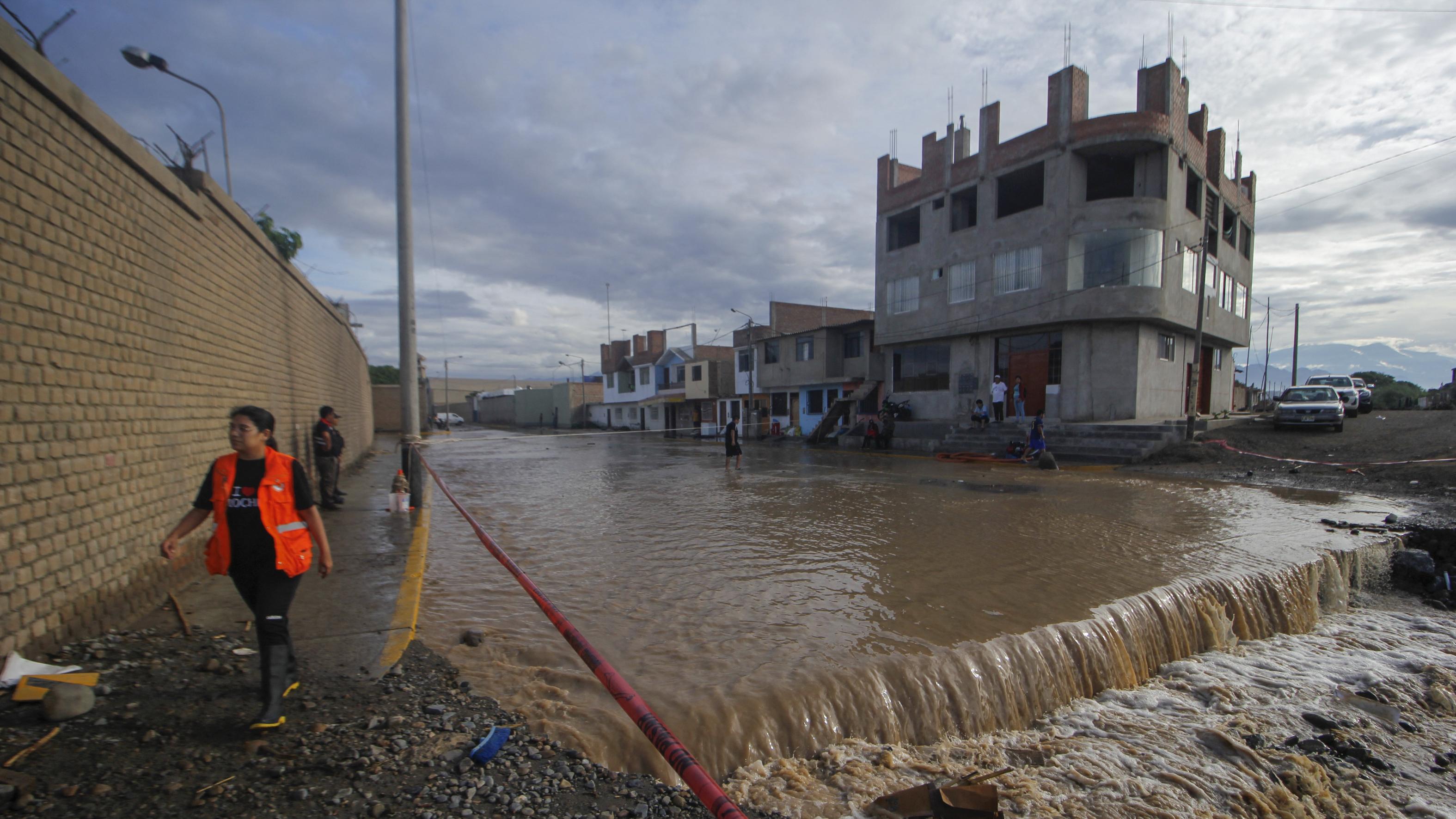 Flood waters rush down a street in Moche, La Libertad department, in northern Peru, on March 13, 2023, after heavy rains caused by the presence of an "unorganized cyclone" named Yaku, off the Peruvian coast, in the waters of the Pacific Ocean. (PHOTO / AFP)
Flood waters rush down a street in Moche, La Libertad department, in northern Peru, on March 13, 2023, after heavy rains caused by the presence of an "unorganized cyclone" named Yaku, off the Peruvian coast, in the waters of the Pacific Ocean. (PHOTO / AFP)
SANTIAGO — The El Nino weather phenomenon will last at least through the first half of 2024, according to the latest United Nations forecasts, with abnormal rainfall due across Latin America raising fears for the agricultural sector.
Pacific sea surface temperatures soared in recent months, "with stronger warming along the South American coast," said the report from the Food and Agriculture Organization of the United Nations (FAO) accessed by Reuters on Thursday.
Extreme conditions brought by El Nino is hitting the region but it is also simultaneously facing climate change effects such as heat waves
Forecasts for the first quarter of 2024 show more rain than usual in southern cone countries such as Peru and Ecuador, as well as Mexico, alongside ongoing dry conditions in Brazil, Guyana and Suriname.
READ MORE: Australia formally declares El Nino underway
The current dry spell in Central America however is set to last only until the end of this year.
The report also stresses that agriculture, which includes crops, livestock, forests and fishing, is particularly vulnerable given the sector can absorb 26 percent of economic losses during extreme weather conditions and up to 82 percent during drought.
Key fish species like anchovies and tuna on the northern coast of Peru and southern Ecuador are particularly at risk, it said.
Ecuadorian fishermen reported a 30 percent decrease in tuna catching since February, it said.
The El Nino and its opposing La Nina weather patterns have impacted the production of key crops such as wheat, rice and corn in Latin America, which are highly dependent on raw materials.
Extreme conditions brought by El Nino is hitting the region but it is also simultaneously facing climate change effects such as heat waves, said the report.
READ MORE: Japan weather bureau: 90% chance of El Nino continuing into winter
The FAO said it has launched a plan to mobilize financial resources for vulnerable communities in several countries affected by the extreme weather.


